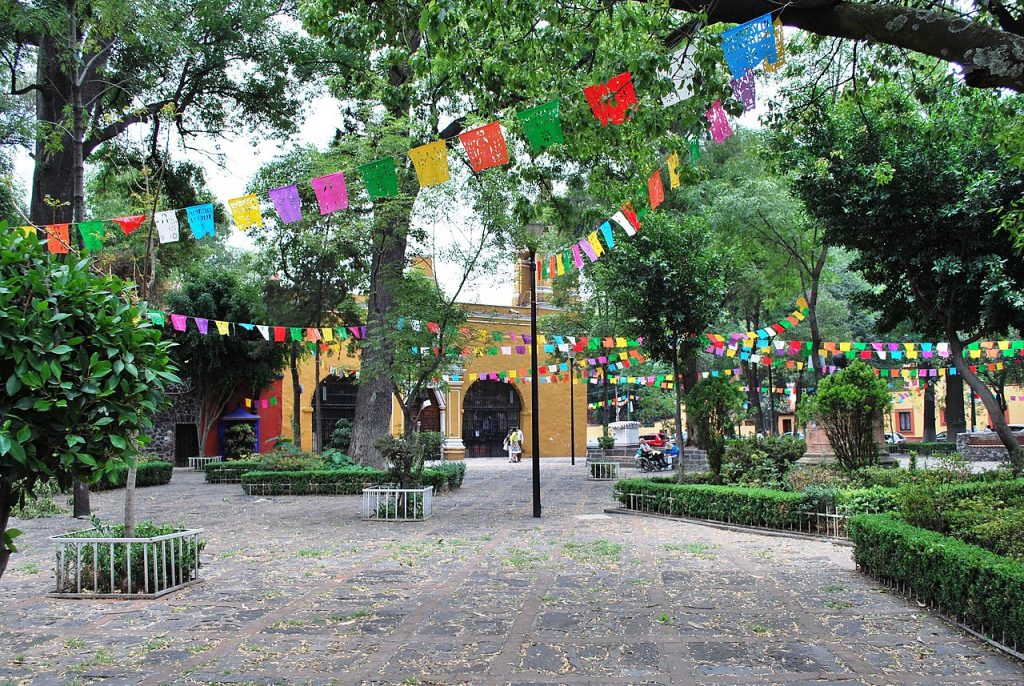
The Plaza de Santa Catarina is likely the most iconic small park in Coyoacán. Generations of Coyoacán residents have taken to its benches, trees and the surrounding cultural centers and craft shops. It also serves as a reception area for the tiny but important theater on the west side of the plaza.
Paved entirely in volcanic stone, the plaza has been in use for hundreds of years. The pavement has been a constant since the 16th century. Once an important stop on the Real Camino a San Ángel, the Royal Road to San Ángel. The atrium of the Santa Catarina Chapel, it was an early point of evangelism and remained so through the colonial period. The atrial wall was only torn down with the close of the Cristero War in the 193os.
At that time, residents agreed to tear down the wall, and to create a park independent of the church. As a city park, it’s been an important one ever since. The park’s current appearance dates from a remodeling in the 1970s. Stone benches took shape at that time too. The trees shading the Plaza de Santa Catarina include jacarandas, privets, and cherry trees. They are typical of most parts of the center of Coyoacán.
Just south of the giant Viveros Park, Santa Catarina is roughly at the midway point between Metro Viveros and the Jardín Centenario. It’s about a 12-minute walk in either direction.
Francisco de Paula Sosa Escalante (1848–1925) was a writer, poet, historian, biographer and journalist.Born in the city of Campeche, then still a part of Yucatan, he studied Latin, philosophy and law. Active in politics during the turbulent 19th century, he became increasingly influential and eventually he moved to Coyoacán. He is remembered for having proposed the positioning of monuments along the then-young Paseo de la Reforma. This was during the administration of Porfirio Díaz. He died in poverty in 1925.
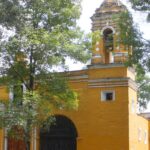
Nearest at 0.05 kms.
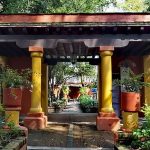
Nearest at 0.05 kms.
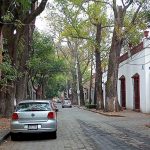
Nearest at 0.07 kms.

The remarkable legacy of mysterious 500-year-old olive trees...

The forest park of Tláhuac...
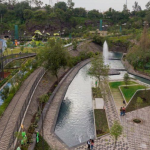
A former asphalt plant is reborn as a magnificent city park!
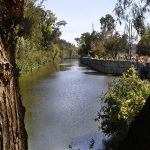
One of the Mexico City's oldest canals is restored and reinvigorated.

Once a forlorn barrier, today's Gran Canal park is uniting multiple neighborhoods.